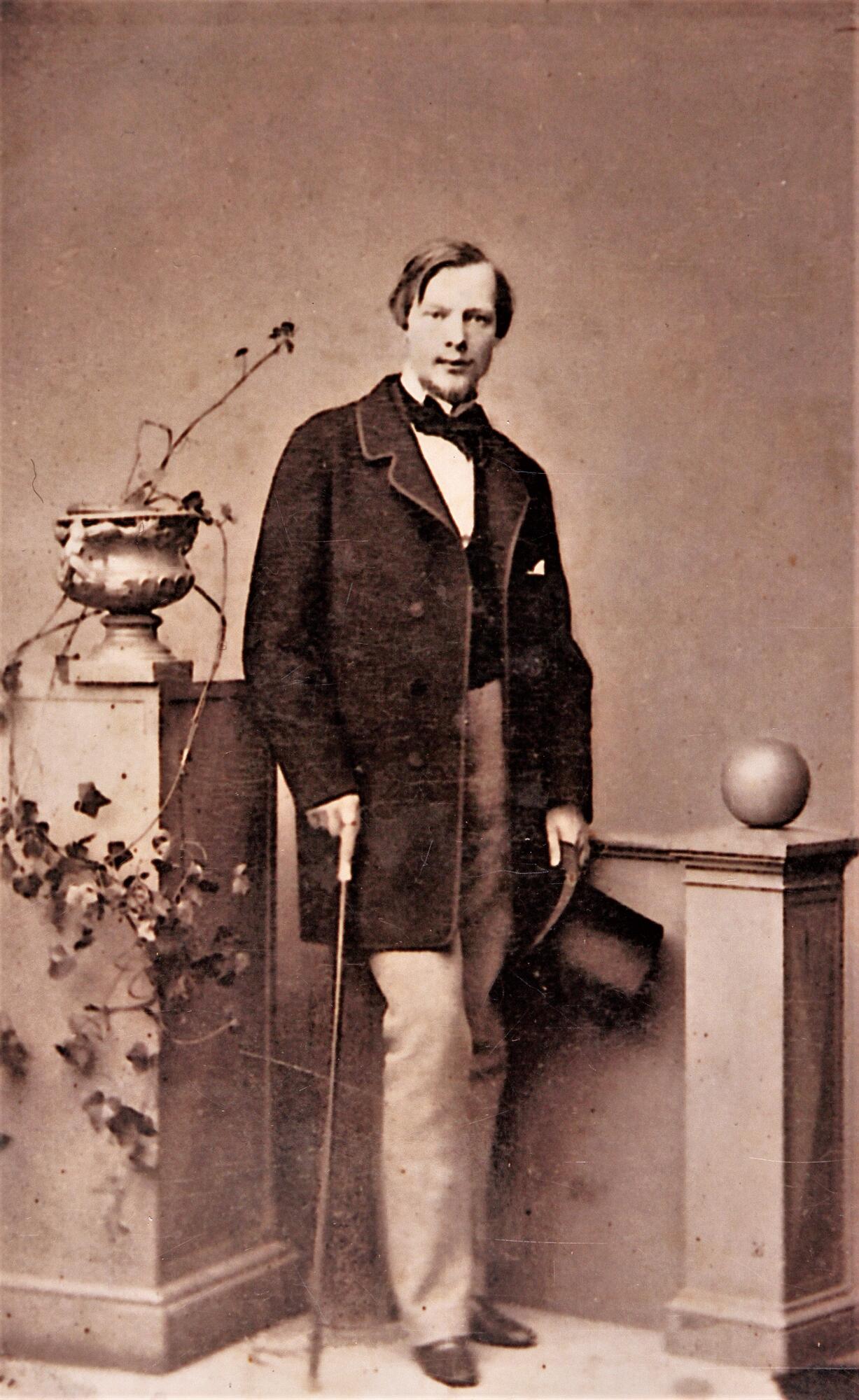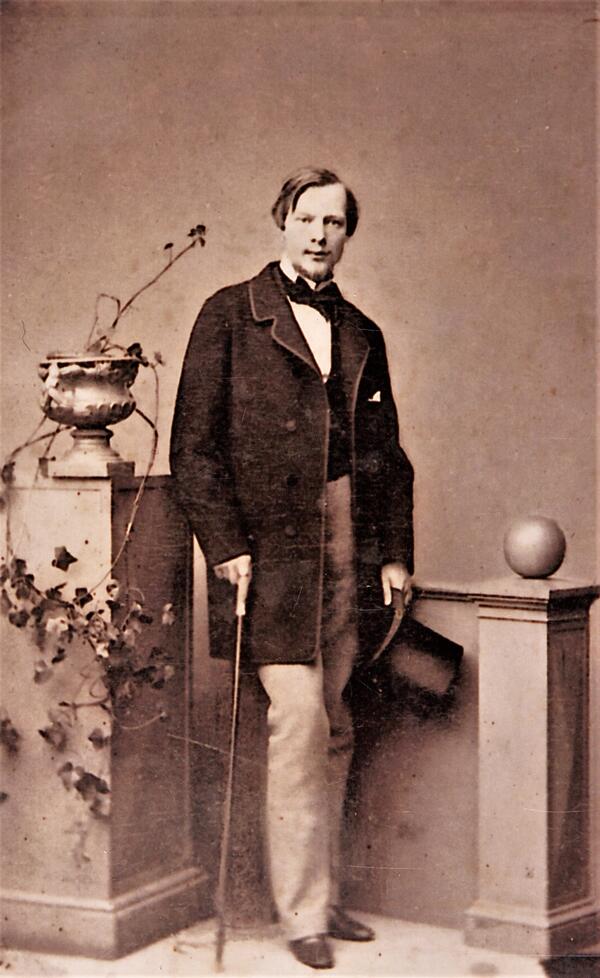The Botkins were a famous family of merchants, industrialists and patrons of the arts. They owned an estate in the village of Novaya Tavolzhanka, Shebekino volost, Belgorod county, Kursk governorate, and contributed greatly to the economic development of the region.
In 1882, the company “Peter Botkin’s Sons” bought a sugar factory, located on the right bank of the Seversky Donets River. The co-owners of the firm were the sons of Peter Botkin, a merchant of the first guild, who sold tea in Moscow.
The photograph from the museum collection features Dmitry Botkin, one of the company’s co-owners. His descendants, who nowadays live in France, donated the picture.
Dmitry Botkin ran a trading company and the Novotavolzhansky sugar factory. He was in charge of accounting, sales and correspondence with the partners, while his brother Peter was engaged solely in the wholesale trade of tea. After the brothers died, the “Novotavolzhansky Botkin Beet and Sugar Factory Partnership” was inherited by their descendants.
The Botkins' estate was located in Novaya Tavolzhanka and occupied more than 8 thousand hectares, part of which belonged to the family, while the rest was rented from different owners. The Botkins spent most of the year in the capital and only came to the estate in summer. Here they built a house, planted an apple orchard and created a system of ponds. There was a manager who took care of the estate.
Besides an estate and a sugar factory, the Botkins owned 11 “economies” — as they called large farms with hired workers and agricultural equipment, 3 mills and a brick factory. Most of the land was allocated to beetroot, a raw material for sugar production. People in the “economies” grew vegetables and various crops, raised animals, and kept forestry. The Botkins also contributed to the development of science in the region: they built a weather station, a selection station for breeding new varieties of plants, an experimental field and a veterinary clinic. Every year trainees from the Moscow Agricultural Academy came to work at the estate.
Near the Novotavolzhansky factory there were three warehouses where finished products were stored. Sugar was sent to Moscow, Yaroslavl, Vladimir and Kostroma, as well as to Siberia and the eastern provinces of European Russia.
Shortly before the revolution of 1917, the Botkins sold the Novotavolzhansky factory and the estate to the Ukrainian sugar merchant Mikhail Tereshchenko.
In 1882, the company “Peter Botkin’s Sons” bought a sugar factory, located on the right bank of the Seversky Donets River. The co-owners of the firm were the sons of Peter Botkin, a merchant of the first guild, who sold tea in Moscow.
The photograph from the museum collection features Dmitry Botkin, one of the company’s co-owners. His descendants, who nowadays live in France, donated the picture.
Dmitry Botkin ran a trading company and the Novotavolzhansky sugar factory. He was in charge of accounting, sales and correspondence with the partners, while his brother Peter was engaged solely in the wholesale trade of tea. After the brothers died, the “Novotavolzhansky Botkin Beet and Sugar Factory Partnership” was inherited by their descendants.
The Botkins' estate was located in Novaya Tavolzhanka and occupied more than 8 thousand hectares, part of which belonged to the family, while the rest was rented from different owners. The Botkins spent most of the year in the capital and only came to the estate in summer. Here they built a house, planted an apple orchard and created a system of ponds. There was a manager who took care of the estate.
Besides an estate and a sugar factory, the Botkins owned 11 “economies” — as they called large farms with hired workers and agricultural equipment, 3 mills and a brick factory. Most of the land was allocated to beetroot, a raw material for sugar production. People in the “economies” grew vegetables and various crops, raised animals, and kept forestry. The Botkins also contributed to the development of science in the region: they built a weather station, a selection station for breeding new varieties of plants, an experimental field and a veterinary clinic. Every year trainees from the Moscow Agricultural Academy came to work at the estate.
Near the Novotavolzhansky factory there were three warehouses where finished products were stored. Sugar was sent to Moscow, Yaroslavl, Vladimir and Kostroma, as well as to Siberia and the eastern provinces of European Russia.
Shortly before the revolution of 1917, the Botkins sold the Novotavolzhansky factory and the estate to the Ukrainian sugar merchant Mikhail Tereshchenko.



